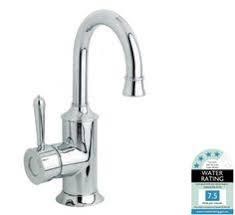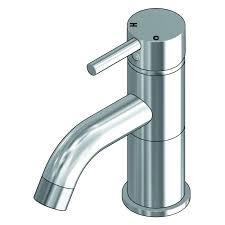
With these tips on how to clean taps, you can restore the shine to your tapware and give your kitchen and bathroom that extra glimmer.
In both the kitchen and bathroom, taps are the most often used component. And, although none of us has the time or energy to keep them in tip-top shape on a regular basis when they become too obvious, they may become too unsightly to ignore. And, if you do have the cleaning itch, have you considered how to clean tapware? Before we look at home remedies for dirt collection on these fittings, let us first look at how dirt accumulates on them.
What causes the dirt collection on faucets?
If your faucets are unattractive, it might be for one of the following reasons:
Limescale accumulation is an issue.
Limescale (a hard, chalky coating of calcium carbonate) accumulates over time in faucet filters, making it more difficult to regulate the flow of water.
Cleaning the knob is critical since it is the most often touched part of the faucet and accumulates material that must be cleaned.
Stains on the water caused by hard water: Calcium and magnesium deposits in tapware water may result in crimson stains on the handle and on the faucet itself.
Grease buildup at the faucet-to-sink connection:
A difficult-to-maintain position that is constantly exposed to a moist environment
Effective cleaning procedures
For an ordinary polish, use a microfibre cloth and plain water, or a mild cleaning solution for a more professional finish. If you’re using anything stronger, read the package instructions carefully, follow the manufacturer’s recommendations, and test it first on an inconspicuous section of your tapware.
Lemony and energizing

Lemon juice may be used in the same way that a bottle of chemicals is. Soak cotton wool in lemon juice and lay it over the base of the tapware sink, where limescale collects. Allow an hour of soaking time before scrubbing with an old toothbrush and thoroughly rinsing. Perhaps you’ll need to download any additional software. Vinegar works well in this circumstance as well. Due to the acidity of lemon and vinegar, they should not be used on stone or marble surfaces.
Dish soap is a kind of soap that is specifically designed for cleaning dishes.
You may have noticed that your tapware has started to look worn and aged as a result of stains that have accumulated over time from regular usage. Clean up the mess using a towel dampened with a solution of dish soap and warm water. Additionally, you may polish the faucet afterward with a dry cloth until it sparkles.
A non-clogging spout
The spout’s end seems to be a magnet for limescale, which is an issue. While the vinegar or limescale remover is working, moisten a wad of cotton wool and secure it with a rubber band around the tapware. Rinse the cotton wool once it is completed. Alternatively, Lakeland’s clever Limey container may simplify matters. Simply pour limescale remover into it and screw it onto the faucet head.
A swift response is essential.
The active gel may be utilized to remove stubborn limescale from adjacent tapware, while remover spray can be used to unclog a clogged shower head.
A Suggestion for Purchasing New Tapware
If you’re contemplating replacing your tapware and your water is very hard, a matte finish such as brushed steel or brushed nickel may be your best choice since marks will be less visible. Choose a design that avoids nooks and crevices where dirt might accumulate.
Baking soda is a naturally occurring chemical component.
Are you unable to remove a tenacious discoloration on the knob or body of the tapware? After adding baking soda and a little quantity of water, use a toothbrush to scrape away at the discoloration. You’ll be surprised at how fast the stain vanishes!
Microfiber cloth
This treatment is beneficial for those of you who have metal-plated taps in your bathroom. Avoid using acidic liquids such as lemon or vinegar on these faucets, as they may cause the finish to deteriorate. Daily cleaning of the faucets with a microfiber cloth is recommended. This will minimize the accumulation on the tapware.
It is a good idea to clean metal-plated faucets.
If you have metal-plated tapware in your bathroom to complement the décor, bear in mind that it will take more care and attention to preserve its look than standard stainless-steel taps. Due to the delicate nature of metal plating, you should avoid putting abrasive cleaning solutions on it.
When a thorough cleaning of the tapware is necessary, a light solution of mild soap and distilled water is advised, which should be applied with a sponge or microfiber cloth. Avoid using regular tap water since it has a propensity to tarnish the delicate metal covering. If your fixtures have hard water stains, you may clean them using a mild solution of baking soda and distilled water. If required, clean each individual spot with the edge of a soft cloth or sponge soaked in the solution. Wipe away the stains gently—if you scrub too vigorously, you risk scratching the fittings.
A freshly cleaned sink faucet that gleams in the sunlight may change the look of your kitchen or bathroom in an instant. However, as is the case with most things, sink faucets do not stay clean longer, and the dreaded accumulation of filth and muck ultimately returns.
Along with unattractive grime, sink fittings provide an ideal environment for germs to thrive. Certain types of germs may cause surface stains and odors, which can be hazardous to your faucets. The steady flow of hot water from these sink fixtures creates a warm, humid atmosphere conducive to the growth of microbes.
Microbes on the surface of your kitchen and bathroom tapware may triple their population in as little as twenty minutes under the right conditions. While microbial contamination of sink fixtures is a minor annoyance at home, it may become a serious issue in public settings such as hospitals and public bathrooms. If the sink fittings are not maintained clean, microbes that form on the surface of publicly accessible faucets may easily be transmitted and spread to the general population.
If this article has piqued your urge to clean everything, utilize these unique solutions to thoroughly clean every inch of your home!
You can read about Taps for the basin and bath – useful jewelry for the bathroom by clicking here.


